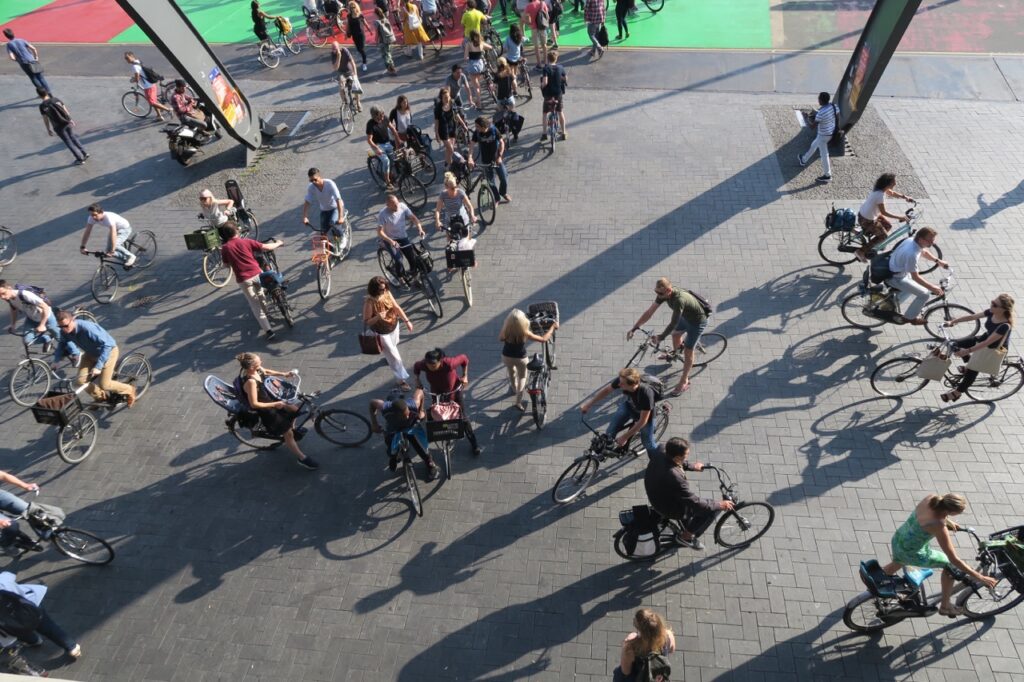How can we look at the cycling practice beyond a functional means of transportation from A to B? How important is it to understand the subjective experience and sensory world of cycling? Our researchers Ran Zhang, Marco Te Brömmelstroet, Anna Nikolaeva and George Liu have published a critical review paper examining knowledge about cycling in order to develop a conceptual framework and applicable methods to study the subjective aspects of cycling experience.
It’s time to ask planners and scholars to rethink their implicit efforts to mitigate the negative effects of cycling experiences and look for opportunities to optimize for positive cycling experiences. This paper contributes a nuanced understanding of CSE, challenges existing terminologies, and advocates for a more inclusive approach. Read a summary report of the study below.
In search of cycling subjective experiences
When evaluating cycling subjective experiences (CSE), mobility researchers have questioned the depictions of cycling as an efficient, fast, and solitary mobility mode. By reframing cycling in terms of its emotional impact on the cyclist, research to date has explored dimensions such as fun, relaxation, and sociability of cycling experiences. Yet, these insights have not been integrated into a holistic understanding of CSE. Our latest research, Cycling subjective experience: A conceptual framework and methods review, dives into the intricate world of CSE, aiming to answer the fundamental questions: how is the subjective experience of cycling defined and measured in academia?
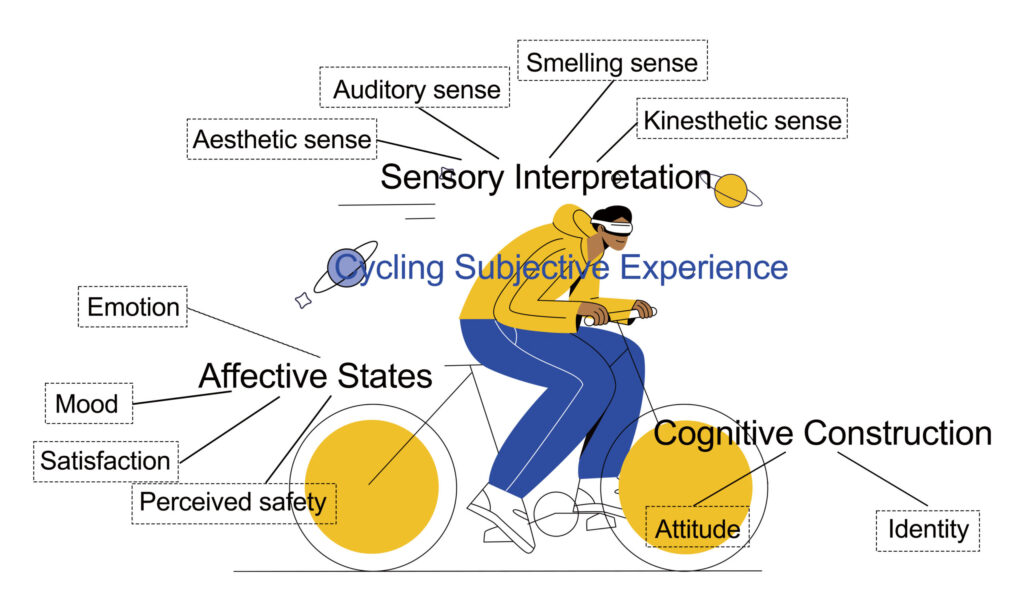
Core Aspects of CSE:
This research critically examines previous reviews on CSE, revealing terminological inconsistencies and the absence of a comprehensive framework. Building on the most recent definition of CSE, the authors emphasize the centrality of “affective states” over the commonly misapplied term “emotions.” The paper introduces two additional key aspects—sensory interpretation and cognitive construction—forming the foundation for understanding and describing CSE (Figure 1).
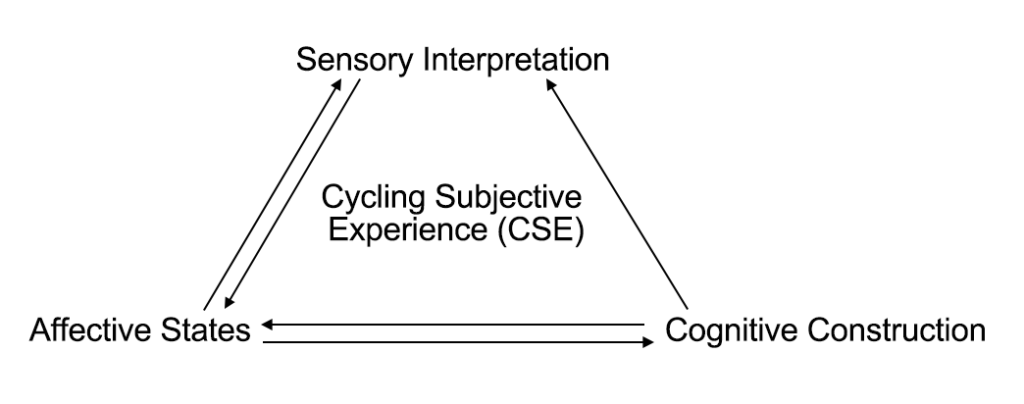
Dimensional Components of CSE:
Exploring ten dimensional components of CSE within the identified aspects (Figure 2), the study highlights a shift from a visually biased perspective to a broader understanding of the multisensory phenomenon known as “sensescape.” The paper reveals a lack of universally agreed-upon definitions for certain affects, emphasizing their longer durations, ambiguity, and irreducibility. Functional studies targeting attitudes to enhance cycling rates contrast with identity research that underscores the impact of local context, revealing marginalized, stigmatized, disadvantaged, and invisible identities of cyclists.
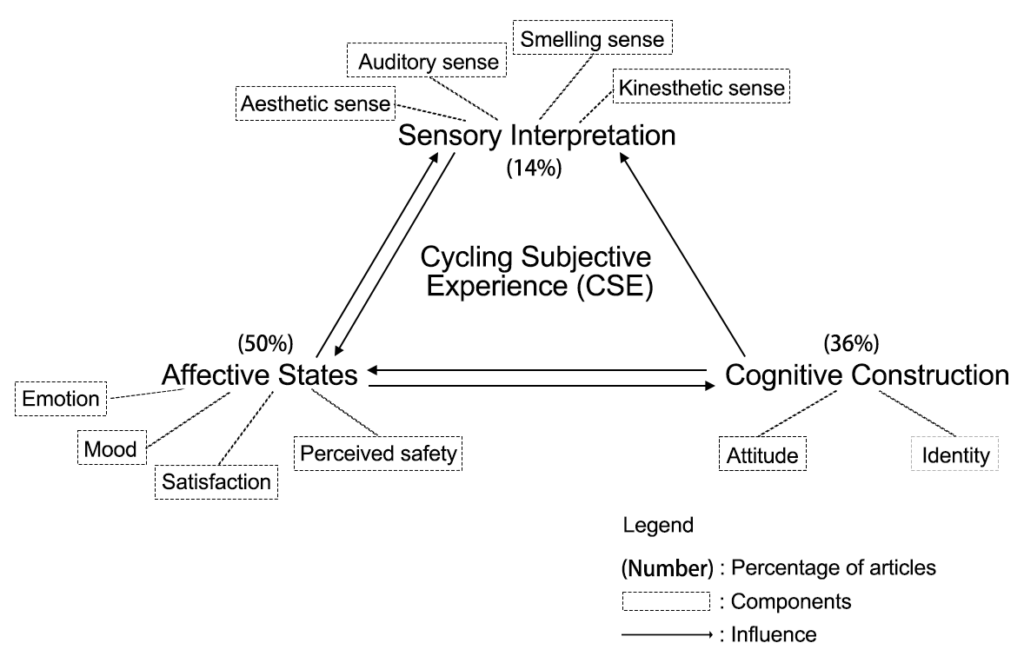
Methods of Capturing CSE:
This novel framework not only elucidates the relationships within the current literature but also identifies measurement methods aligned with this framework. Categorized as mobile methods, retrospective methods, interceptive surveys, and combinations thereof (Figure 3), this study showcases the advantages of mobile methods, such as wearable sensors and GPS tracking, providing real-time insights into the unfolding cycling experience, albeit with lower participant numbers.
Retrospective methods, including questionnaires and interviews, reach larger participant pools but may be subject to memory bias. The dominance of retrospective surveys and interviews persists, but the growing interest in mobile methods enhances real-time and context-specific data collection.
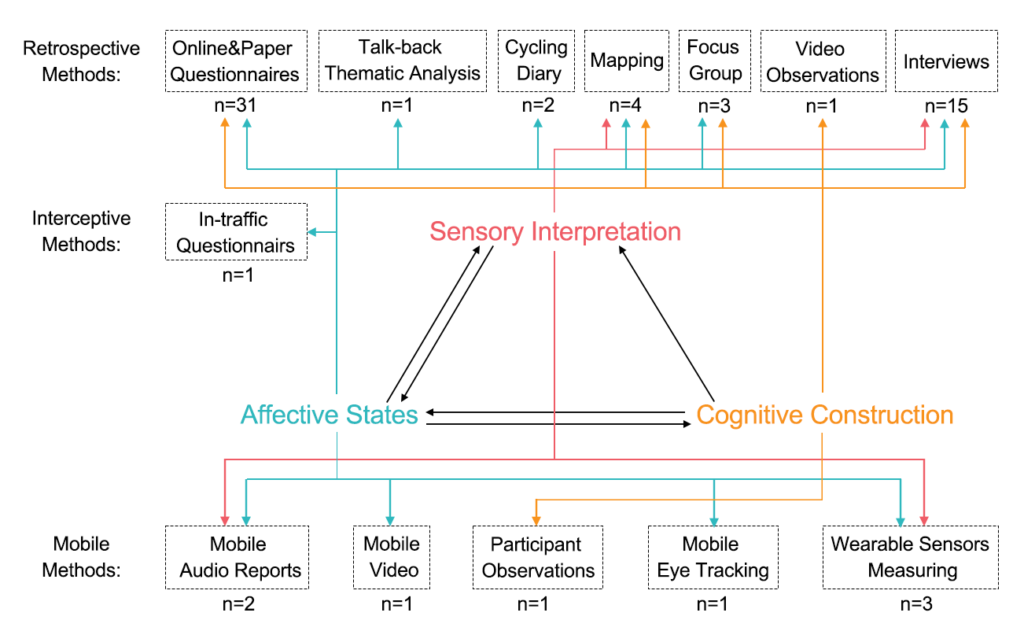
A noteworthy finding is the underrepresentation of positive values in cycling experiences in our study sample, suggesting that the dominant narrative is still guided by the assumption that mobility is primarily a disutility.
Read the full paper here to embark on a journey through the intricate and emotional world of cycling. You can also take a look at Researcher on the bike: Auto-Ethnography in cycling research seeking cycling experiences from an anthropological perspective.
To cite the academic article: Zhang, R., Brömmelstroet, M. T., Николаева, А., & Liu, G. (2024). Cycling subjective experience: A conceptual framework and methods review. Transportation Research Part F: Traffic Psychology and Behaviour, 101, 142–159. https://doi.org/10.1016/j.trf.2023.12.021



